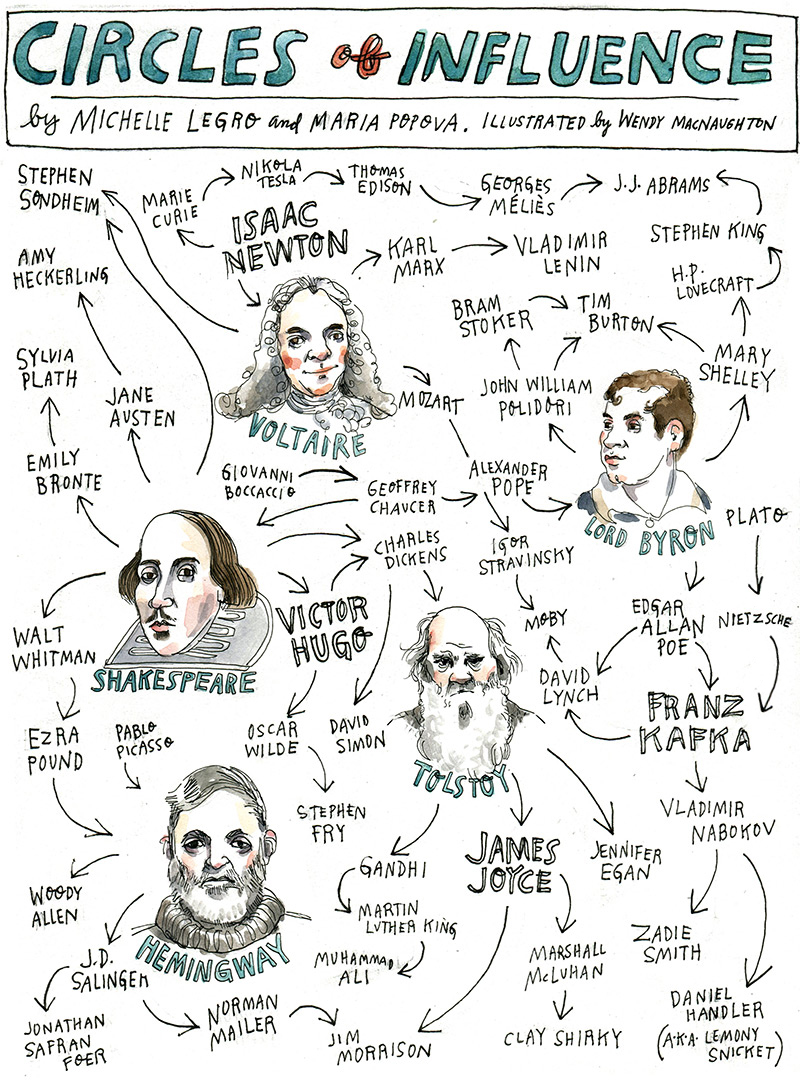What Leo Tolstoy can teach us about curation.
Understanding creative influence is essential to understanding remix culture and a centerpiece of combinatorial creativity. I recently collaborated with illustrator extraordinaire Wendy MacNaughton and Michelle Legro of Lapham’s Quarterly of a subjective visualization of creative influence in literature and other arts, but this ecosystem of cross-pollination is far more layered and complex than a playful graphic could possibly convey. The Anatomy of Influence: Literature as a Way of Life is Harold Bloom’s ambitious effort to peel away at these many layers. Bloom, who for the past half-century has been exploring that ecosystem as a Yale literature professor and contemporary culture’s most significant literary critic, offers insight on 30 of the world’s most iconic writers, from Shakespeare to Joyce to Emerson, and examines issues ranging from the role of “creative misreading” in the joy of literature to the supreme fiction of the romantic self to the influence of a mind on itself. Literature for me is not merely the best part of life; it is itself the form of life, which has no other form.” ~ Harold Bloom
The book is a follow-up to Bloom’s 1973 classic, The Anxiety of Influence: A Theory of Poetry, and was inspired by Robert Burton’s 1621 masterpiece, The Anatomy of Melancholy. Of that influence, Bloom writes:
Traces of Burton’s marvelous madness about in this book, and yet it may be that all I share with Burton is an obsessiveness somewhat parallel to his own. Burton’s melancholy emanated from his fantastic learning: he wrote to cure his learnedness. My book isolates literary influence as the agon of influence, and perhaps I write to cure my own sense of having been overinfluenced since childhood by the great Western authors.”
But the part that captivated me the most was this quote from a Leo Tolstoy letter in the book’s epigraph, which articulates the essence of my own curatorial sense of purpose better than I ever could:
For art criticism we need people who would show the senselessness of looking for ideas in a work of art, and who instead would continually guide readers in that endless labyrinth of linkages that makes up the stuff of art, and bring them to the laws that serve as the foundation for those linkages.”
A true treat for literati and remixologists alike, The Anatomy of Influence is an exquisite paean to the love of literature, one that pulls you into its enthusiasm with equal parts mesmerism and cunning precision.
(Via Brain Pickings.)

No comments:
Post a Comment